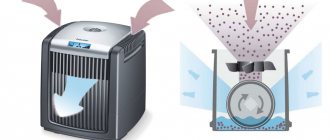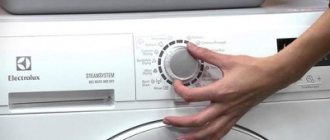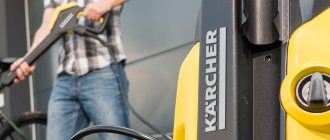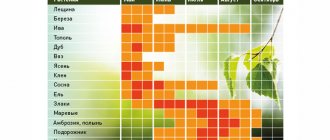Using humidifiers correctly
For long and proper operation of the device, you must know and follow the rules for its operation.
How to set up a household humidifier before turning it on
- do not rush to turn on the device immediately after purchase, it should be at room temperature for at least an hour,
- read the instructions, carefully study all points of the operating rules,
- decide on the installation location,
- remember that the temperature in the room where the device will be located must be no lower than +5 and no higher than +30 degrees,
- pour cold water into the water compartment,
- connect the device to power supply,
- turn on by pressing the power button,
- select the device operating mode you need,
- After switching off, rinse with water and dry.
Tips for using home humidifiers safely
An air humidifier is a device that runs on electricity. Its operation must be approached responsibly to avoid accidents.
The device can be connected to a power source only when it is completely and correctly assembled, the water tank is full and there are no open windows in the room.
It is important to ensure that the device is placed on a dry, horizontal surface. Do not place anything close to the humidifier so as not to block the free access of air to it. This is especially true for the steam outlet.
Children should not be allowed near the operating device: during operation it heats up and the child may get burned.
It is advisable to use distilled or filtered water to fill the container, since tap water is quite hard and contains various impurities, which can affect the quality and duration of operation of the device.
Never turn on the appliance if there is no water in it. The humidifier can become unusable within a few seconds of operating with an empty water compartment.
It is prohibited to add flavorings to the water container - this will quickly render the device unusable. Some models have special compartments for this purpose, so if you want a scenting feature, think about it before making a purchase.
If you do not plan to use the device for a long time, then it must be dried and stored in a cool, dry place.
Terms of use
To ensure that the device works correctly, use a humidifier following the manufacturer's recommendations. Read the technical instructions and observe 3 basic conditions:
- The power must match the area of the room. A device with insufficient performance will not serve a large space. A device that is too powerful in a small room will create a “steam bath” effect.
- It is necessary to close the windows when the humidifier is operating. External ventilation will reduce the moisture level, increase the operating time of the device and increase energy consumption. It is advisable to turn on the device with the doors closed to relieve the device from additional load.
- Use a humidifier in winter and summer. Air conditioning and heating dry out the air, which is not beneficial to health.
Do not turn on the device all night - in this case you will have to close the windows. And without fresh air, rest will not be complete.
Where to put
It is important to install the device correctly in order to use the humidifier without harming furniture, equipment, books and paintings. Observe the following conditions:
- the distance from the floor level is 50-100 cm, in this case the steam will enter the space and will not condense on the coating;
- distance from heat sources is at least 0.3 m, otherwise the moisture will immediately evaporate;
- the device must stand on a flat plane, without tilting, with a deviation from the edge, so as not to tip over and fall;
- The installation location must be inaccessible to children.
Manufacturers recommend placing the humidifier in the central part of the room.
Avoid steam flow:
- for furniture, wallpaper, books, equipment, plants;
- in the nursery - for a crib, toys, clothes;
- in the bedroom - on the bed.
To prevent waterlogging, devices are not installed:
- in kitchens less than 20 square meters. m;
- in bathrooms, toilets;
- in rooms with large aquariums.
Manufacturing companies produce low-power, silent humidifiers for newborns that purify the air from germs and allergens. The use of the device in the baby’s room should be discussed with a pediatrician.
How to turn it on
Before turning on the device for the first time, you need to stand for an hour at room temperature.
Start the steam unit in this order:
- Fill the container with water, checking the indicator.
- Close the lid tightly.
- Turn on the device, set the mode.
Turn on the ultrasonic humidifier step by step:
- The day before connection, place the cartridge in water.
- Fill the tank, close the lid, connect it to the body.
- Place the sprayer on top.
- Click on start, set operating parameters.
To start the classic device, proceed as follows:
- Install the filter into the water tray and assemble the housing.
- Fill and close the reservoir.
- Place a container at the bottom of the appliance.
- Turn on the device, adjust the mode.
Follow the manufacturers instructions in the instruction manual.
Optimal operating mode
Adjust the device functions taking into account humidity standards:
- for people, pets - 40-60%;
- for equipment - 45-60%;
- for furniture, books, paintings, parquet, wallpaper - 40-60%;
- for indoor flowers - 55-70%.
The normal moisture level in a residential area is 50%.
When adjusting the mode and duration of continuous operation, consider the following factors:
- Season. In winter and summer heat, the device can operate around the clock. In spring, autumn, in rainy weather - intermittently.
- Features of the model. If there is a built-in hygrometer, the device will turn off after reaching the specified parameters.
- Frequency of ventilation. If you open windows often, the humidity drops.
- Device performance. A low-power device is forced to work longer.
- The presence of indoor plants - they require an increased level of moisture.
The manufacturing companies describe the functions and operating modes in detail in the instructions.
The purpose of household humidifiers to create a healthy indoor microclimate
The normal air humidity in summer is 40%-60%, in winter – 35%-40%. For good health, you must always adhere to these indicators. The seeming harmlessness of too dry or too humid air is actually fraught with danger.
Low humidity leads to frequent headaches. A person may have no idea about the causes of illness if he does not know about the effect of low humidity on the body. There may be a sore throat, sore throat and difficulty swallowing. A large amount of dust, inevitable with a lack of humidity, can provoke allergies, which over time can develop into bronchitis and asthma.
When there is a lack of moisture, a person feels persistent fatigue and drowsiness, and has difficulty concentrating. The skin dries out and ages quickly. In children, dry air can cause frequent colds, as it reduces the protective functions of the mucous membranes and skin.
Low humidity is also harmful to things. Wooden furniture dries and cracks, parquet floors dry out, fabrics become electrified. In rooms with dry air, indoor plants do not breathe and dry out quickly.
A humidifier is used to combat these problems. After turning on the device, breathing in the room becomes much easier, negative symptoms recede. However, it is important to ensure that the humidity does not exceed the upper limit of the norm. Otherwise, mold and the smell of dampness will spread throughout the apartment.
Types and purposes of humidifiers
According to data from Yandex. Market, the price of the device for 2021 starts from 700 rubles.
Depending on the model, additional functions may be available in the humidifier: air ionization, antibacterial lamp, aromatization, ozonation, WI-FI IQ module.
The devices differ in operating principle: ultrasound, steam generation, natural air humidification. Let's take a closer look at each device.
Ultrasonic
The most common type of humidifier. It works as follows: water is poured into the device, which hits the ultrasonic membrane. High frequencies “break” water into tiny droplets, which humidify the air.
The main advantage of such a humidifier is its low noise level (the device is almost silent).
However, it is extremely sensitive to water quality. Contaminants and salts can settle on the filter, which can soon render it unusable. In addition, some consumers note a white coating on furniture from the device. We’ll talk about the importance of the quality of water poured into the filter later.
It is worth noting that modern models are currently available with a cleaning filter that helps avoid such problems.
For example, Electrolux YOGAhealthline EHU-3810D, a modern ultrasonic humidifier with an eco-filter that prevents the formation of hardness salts on furniture.
Steam
They work on a completely different principle. Water is poured into the device and brought to boiling temperature. Intense evaporation occurs, which increases the humidity level in the room. When this level reaches optimal levels, a special device installed on the humidifier, a hygrostat, automatically turns off the device.
However, such a device has a disadvantage: it consumes a lot of electricity.
Traditional
They work on the basis of cold steam. They are considered the easiest to use and the most environmentally friendly. Air humidification occurs through natural evaporation of water. Using a fan, you can regulate the rate of evaporation and, accordingly, the level of moisture saturation in the room.
Xiaomi CJXJSQ02ZM, traditional humidifier. Consumers note in it: convenience, high performance, reliability.
This device costs more than all of the above, but its cost pays for everything it can provide.
Types and principles of operation of household humidifiers
There are three types of humidifiers: traditional, steam and ultrasonic. Having the same purpose, they differ in their design.
Features of traditional humidifiers
For good operation, such a device requires 4-8 liters of clean water per day. Water poured into the compartment intended for this purpose is processed through evaporators. The air sucked into the apparatus returns from there humidified.
Operates at 20-50 W. Almost silent when turned on, it turns off when the required humidity level is reached.
Features of steam humidifiers
A more energy-intensive type of humidifier: it requires 350-600 W and 8-17 liters of water per day. The poured water boils and spreads throughout the room in the form of steam. When the indicator reaches the norm, the device turns off itself. The device should be installed away from indoor plants and people. Changing cartridges is not expected.
Features of ultrasonic humidifiers
The most optimal option for home. Consumes 6-11 liters of water per day. The required power is 40-50 W. It is equipped with an emitter that, through interaction with ultrasound, creates vibration that divides the liquid into small particles. They leave the device in the form of cold evaporation. Some models have built-in steam temperature control.
Requires timely change of gaskets. Only purified water can be poured into the device. Otherwise, all the impurities that were in the water will get into your room and settle on things.
How to properly use a humidifier in an apartment or house: Features of humidifiers
Where to put the humidifier if the tank capacity is 9 liters. Such devices are not placed on a cabinet or shelf. They are placed on the floor near the outlet. When buying a device, you need to understand that tank capacities are an important operational parameter.
Tank capacity (liters) Size of humidified room, m2
| 4-5 | 15-20 |
| 6-7 | 30-40 |
| 8-9 | 50-60 |
Important! The size of the humidifier depends on the size of the reservoir tank.
If you purchase a climate control system, you can not only humidify the air, but also turn on the functions of cooling, air washing, air purification, fan and heater. Such devices are placed on wheels with a lock. Compared to conventional humidifiers, climate control systems are more bulky. Many users thoughtlessly place devices near TVs and computers. This is wrong, fine particles cannot be allowed to settle on other electrical appliances, you should turn on the humidifier further away.
How to properly care for your humidifier
If the device is used every day, it requires daily cleaning. The water container must be rinsed and dried after each use. The device can only be turned on again after it has completely dried. Do not use detergents for cleaning - only water and a soft cloth.
To get rid of scale and plaque, vinegar diluted with water is used. The solution is poured into the water tank and left in it for an hour, after which the tank is thoroughly rinsed with water. No hard sponges are allowed for washing dishes.
Hydrogen peroxide or a solution of bleach and water will help get rid of bacteria (unless the operating instructions say that cleaning with bleach is not allowed). Half a glass of bleach or peroxide is diluted in 4 liters of water and poured into the tank. The device is connected to the mains. After steam comes out, the device turns off and the water is drained. If bleach was used, you will need to change the water several more times for the smell to go away.
Even if you don't use your humidifier for a long time, you still need to clean it every three weeks.
Climate technology Air humidifier
What water is suitable for humidifiers
In most humidifiers, water goes into the air in the form in which it originally is, with all the impurities, salts and contaminants. Both the user and his family will breathe it. In addition, if the liquid is of poor quality (for example, tap water), it spoils the device itself, clogs filters, nozzles, and scale may appear in heating areas. This is why water quality is an important consideration when using humidifiers.
For hydration, it is better to use distilled, bottled demineralized water or from natural sources. Occasionally, you can pour filtered or boiled tap water into the tank, and then remove the sediment.
The water used must be free of impurities
Tap water contains substances that are not retained by filters, are not neutralized, and do not settle when boiled. Getting first into the humidifier, these impurities enter the air and then into the respiratory tract, causing, at best, simply irritation of the mucous membranes.
Water consumption is not so high that you need to save on purchased water and use dirty water. Artesian or industrially filtered water can be collected from self-service machines. It costs quite a bit, about 2-3 rubles per liter.
It is worth paying attention to this point: unused water in the humidifier container can be kept for no more than 24 hours. Then it must be removed and the container washed. If this is not done, the remaining water will become “swampy” and pathogenic microflora will appear there.










